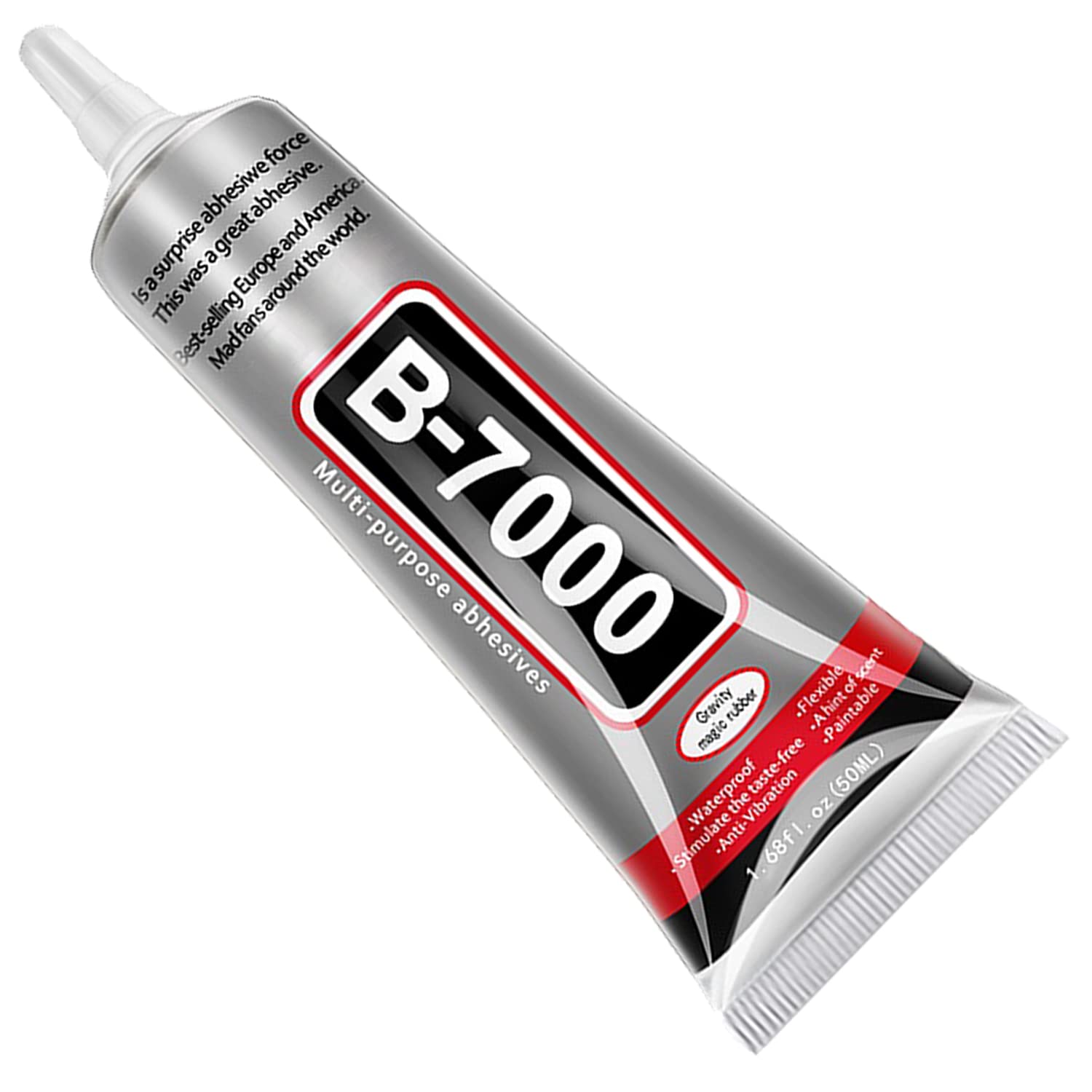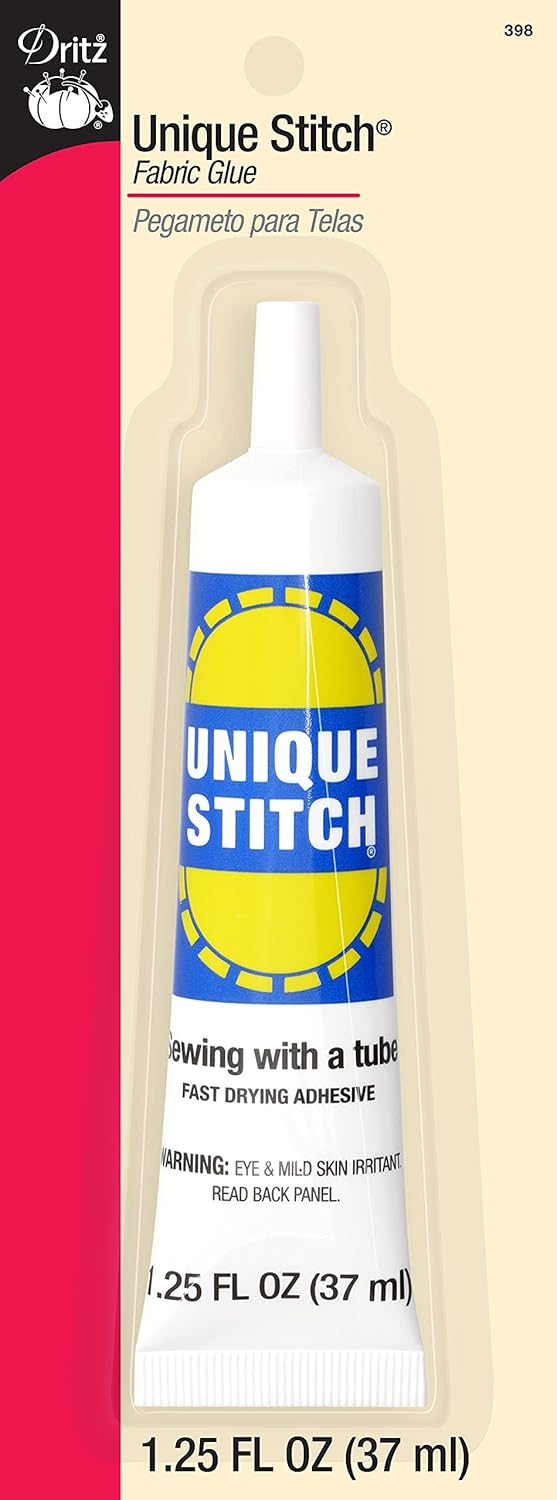Silk the luxurious, soft fabric that can turn any outfit or project into something extraordinary. Whether you’re working on a sewing project, a DIY craft, or fixing a cherished silk garment, you’ll likely need the right adhesive.
But when it comes to fabric glue for silk, it’s not just any glue that will do. Picking the wrong adhesive can damage the delicate fabric, leading to frustrating and costly mistakes.
So, how do you find the right glue? It’s all about understanding the material, the job at hand, and knowing the factors that make a fabric glue ideal for silk.
In this guide, we’ll walk through the best types of fabric glues for silk, the dos and don’ts, and step-by-step instructions on how to apply the glue without ruining your beautiful fabric.
| Product Image | Product Name | Features | Price |
|---|---|---|---|
 |
Fabric, Multipurpose Super B-7000 | Crystal Clear & Waterproof Precision Tip & Anti-Clog Design Multi-Surface Versatility Perfect for quilting patches Stretches up to 900% without breaking ideal for flexible fabrics |
Check Price |
 |
Fabric Glue Permanent, 60 ML Washable Clear | Quilting Without a Machine Works with All Fabrics Precision Tip & Anti-Clog Cap Great for mixed-media quilts and upcycled textile art. |
Check Price |
 |
Aleene’s Fabric Fusion Needlenose Glue | Creates a permanent adhesive between fabrics and embellishments No Sewing or Ironing Needed Ideal for quilters of all skill levels Machine washable and non-toxic |
Check Price |
 |
Bundle of Sewline Fabric Glue Pen | Solid Glue Stick Formula Pen-Like Precision Water-soluble and acid-free Perfect for temporary holds during sewing or quilting |
Check Price |
 |
Gorilla Waterproof Fabric Glue 2.5 Ounce Tube | 100% Waterproof & Washer-Safe Designed for permanent bonding Ideal for quilts, garments, and accessories Dries completely transparent Needle-Free Convenience |
Check Price |
 |
Permanent Clear Washable Clothing Adhesive for All Fabrics | Superior Bonding Power Built-In Precision Tip Fast Drying Wide Fabric Compatibility Waterproof & Durable |
Check Price |
 |
Dritz 398 Unique Stitch Stitchless Sewing Liquid Adhesive | Strong, Permanent Bond Bonds securely without stitching, ironing, or heat setting. Non-toxic and gentle on all fabric types. Adds texture and style to your projects |
Check Price |
 |
Lawn Fawn Glue Tube (Pack of 3) | Pen-Like Precision Crystal Clear & Acid-Free Dries completely clear with no residue |
Check Price |
 |
Liquid Stitch Fabric Adhesive | Powerful Performance Stretchable and waterproof Features a squeezable hose container with a tiny metal outlet for controlled application Eco-Friendly & Skin-Safe |
Check Price |
 |
Nanoxa 100ml Fabric Glue | Superior Adhesion & Durability Ideal for visible areas and delicate fabrics Needle-point applicator allows controlled glue placement |
Check Price |
 |
iCraft Fabric Fuse Liquid Adhesive 2.1 FL OZ | Quick & Permanent Bond Dries Clear & Stays Flexible No-Sew Convenience Nontoxic and washable |
Check Price |
 |
Fabric Glue Permanent, Extra Strong Fabric Adhesive | Strong Bond Waterproof & Iron-Safe Precision Tip for Intricate Work Needle-nose applicator allows controlled glue placement for delicate stitching zones Fast Drying |
Check Price |
Choosing the Right Fabric Glue for Silk: Key Considerations
Silk is a delicate fabric, and not all adhesives are created equal. When selecting fabric glue for silk, there are a few things you should keep in mind to ensure you pick the right one for your project.
1. Strength and Durability
When choosing fabric glue, you need one that’s both strong and durable. Silk can be a slippery material, and the glue needs to hold up over time, especially if the fabric is going to be exposed to wear and tear.
But remember, you don’t want the glue to be too strong either, as it could cause the fabric to stiffen or damage the delicate fibers.
2. Drying Time
If you’ve worked with fabric glue before, you probably already know that drying time is an essential factor. Too quick, and you won’t have time to reposition; too slow, and your project could get messy.
Ideally, fabric glue for silk should dry at a moderate speed, giving you time to adjust your pieces but also adhering firmly once dried.
3. Flexibility
One of the standout qualities of silk is its flexibility. The fabric stretches and moves with your body, and the glue you use should maintain this flexibility.
A rigid glue could cause the silk to lose its natural drape, making it look unnatural or uncomfortable.
4. Non-yellowing Formula
One common mistake people make when using fabric glue is picking one that turns yellow over time.
With silk, a glue that discolors could ruin the appearance of your fabric, especially if it’s a light or bright shade. Always go for a non-yellowing formula to maintain the pristine look of your silk.
5. Washability
Many projects using silk end up getting washed at some point. It’s important that the fabric glue you use is washable and won’t lose its hold after a few washes.
Check the label of your glue to confirm that it’s machine-washable or at least hand-washable for fabric projects that require cleaning.
Step-by-Step Guide: How to Use Fabric Glue on Silk
Now that we’ve covered what to look for in a fabric glue, let’s go through how to use it properly on silk.
Step 1: Prepare Your Silk Fabric
Before you begin gluing, make sure your silk fabric is clean and free from any dirt or oils that could interfere with the adhesive. Gently wash the fabric and let it dry completely.
Step 2: Apply the Fabric Glue
Squeeze a small amount of fabric glue onto a disposable surface, like a piece of parchment paper or a craft mat. Using a brush or a toothpick, apply the glue to the back of your fabric, working in small sections.
Make sure you don’t over-saturate the fabric, as silk can absorb excess glue, which could cause visible marks.
Step 3: Press the Fabric Pieces Together
Once the glue is applied, press the silk pieces together gently but firmly. If you’re attaching silk to another fabric, such as cotton or polyester, make sure both surfaces are in alignment.
Step 4: Allow the Glue to Dry
Let the glue dry completely before moving or handling the fabric. Most fabric glues will need anywhere from 30 minutes to 24 hours to fully set, depending on the product you’ve chosen and the thickness of the glue.
Step 5: Test the Bond
Once the fabric is dry, gently tug on the fabric to check if the bond is strong enough. If the fabric comes apart easily, apply more glue and repeat the drying process.
Comparison Table: Best Fabric Glues for Silk
To make your decision easier, here’s a comparison table that breaks down some of the top fabric glues based on their key features:
| Fabric Glue | Drying Time | Features |
| Aleene’s Fabric Fusion | 2-4 hours (dry to touch) | Strong bond, clear, washable, flexible |
| Dritz Unique Stitch | 2-6 hours (full bond) | Ideal for delicate fabrics, non-yellowing |
| Beacon Fabri-Tac | 2-3 hours (dry to touch) | Dries clear, quick-drying, strong hold |
| Loctite Fabric Adhesive | 30 minutes (dry to touch) | Flexible, fast-drying, washable |
| Tear Mender Fabric Adhesive | 5-10 minutes (dry to touch) | Instant bond, machine washable |
Common Mistakes to Avoid When Using Fabric Glue on Silk
While fabric glue is a great option for working with silk, there are a few common mistakes that could ruin your project. Here are some to watch out for:
1. Using Too Much Glue
Silk is a delicate fabric, and too much glue can cause it to become stiff or discolored. Always use a small amount of glue and apply it sparingly.
2. Not Allowing Enough Drying Time
Patience is key when working with silk and fabric glue. Rushing the drying process can result in the glue not bonding properly, leading to peeling or separation over time.
3. Choosing the Wrong Type of Glue
Make sure you select a glue specifically designed for fabrics, especially delicate ones like silk. Regular glues or adhesives not designed for fabrics can cause permanent damage.
4. Not Testing the Glue First
Before starting your project, always test the glue on a scrap piece of silk to see how it reacts. This will help you avoid unwanted stains or discoloration.
Conclusion: Choosing the Right Fabric Glue for Silk
In conclusion, finding the best fabric glue for silk involves considering a few key factors: strength, flexibility, drying time, and washability.
The wrong adhesive can ruin your fabric, while the right one can help create beautiful, long-lasting results.
Remember to always test your glue on a scrap piece of fabric, apply it sparingly, and allow for sufficient drying time.
Now that you’ve got the lowdown on fabric glue for silk, I encourage you to give it a try on your next project! Feel free to share your experience or ask any questions in the comments below. Happy crafting!
Frequently Asked Questions (FAQ)
1. Can I use fabric glue on silk to make permanent repairs?
Yes, fabric glue is perfect for repairing silk, especially for small tears or rips. Just make sure to use a fabric glue designed for delicate fabrics and allow enough drying time for a permanent bond.
2. How long does fabric glue last on silk?
When applied correctly and given enough time to cure, fabric glue can last a long time on silk. However, frequent washing may wear it down over time, so be sure to follow care instructions for best results.
3. Can I use fabric glue for silk if I plan to wash the fabric?
Yes, most fabric glues are designed to be washable. Always check the packaging to ensure that the glue you’ve chosen is machine washable or at least safe for hand washing.
4. Can fabric glue make silk stiff?
Fabric glue can stiffen silk if too much is applied. It’s essential to apply a small amount and make sure it’s evenly distributed to avoid this issue.
5. Is fabric glue safe for silk clothing?
Yes, fabric glue is generally safe for silk clothing. Just make sure to choose a glue specifically made for fabric to ensure the best results.

